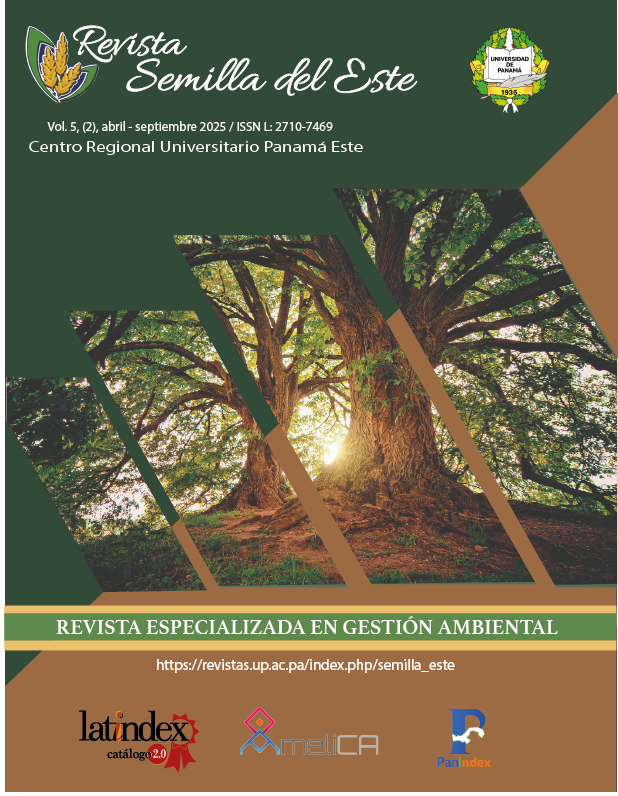

Direitos de Autor (c) 2025 Revista Semilla del Este

Este trabalho encontra-se publicado com a Licença Internacional Creative Commons Atribuição-NãoComercial-CompartilhaIgual 4.0.
La investigación sobre la percepción comunitaria en la subcuenca del río Zaratí, que forma parte de la cuenca del río Grande, se lleva a cabo en la provincia de Coclé, Panamá, específicamente en la comunidad de Membrillo, tiene como objetivo evaluar el uso sostenible de los recursos naturales y la conservación del ecosistema. Se utilizó una metodología no experimental y transversal, con un diseño descriptivo que incluyó encuestas a 100 artesanos y guías turísticos. Los resultados muestran que el 36% de los encuestados utilizan piedra de jabón para hacer artesanías, seguido por agua (27%) y vegetación (23%), con una frecuencia diaria de uso del 71%. Además, todos los participantes consideran necesaria la restauración del ecosistema, destacando la reforestación como la acción más importante. En cuanto a las prácticas sostenibles, se sugieren la agricultura orgánica y un manejo responsable de la extracción de piedra de jabón. Un 49% de los encuestados cree que un modelo sostenible podría mejorar significativamente su calidad de vida y un 90% está dispuesto a colaborar en iniciativas de restauración y desarrollo sostenible. Las principales necesidades identificadas para avanzar hacia este desarrollo incluyen capacitación y educación (47%), recursos financieros (31%) y asesoría técnica (18%). En conclusión, el estudio revela una comunidad consciente de su dependencia de los recursos naturales y comprometida con su conservación. Existe un deseo colectivo por implementar prácticas sostenibles que mejoren tanto las condiciones ambientales como sociales, subrayando la importancia de la participación comunitaria en la gestión ambiental.